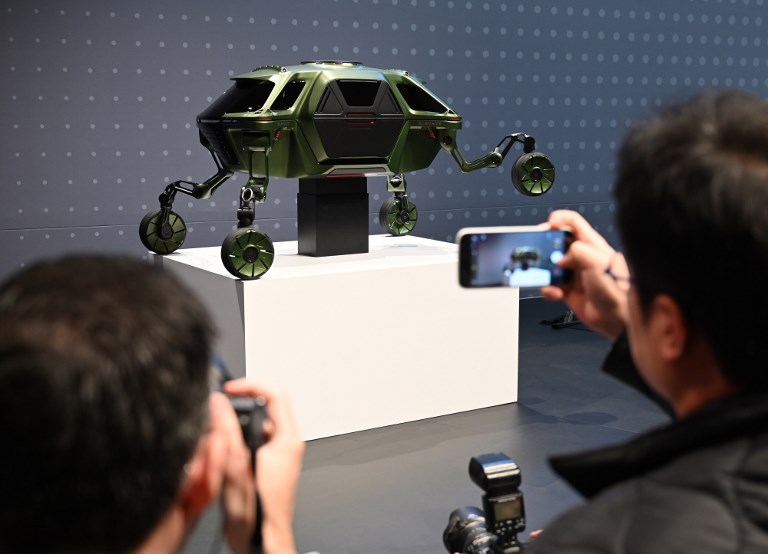
by Julie CHARPENTRAT
Agence France Presse
LAS VEGAS, United States (AFP) — After catastrophic wildfires in southern California late last year, the Israeli startup Watergen sent in its devices which pull clean water out of the atmosphere for firefighters and relief workers.
The machines, which have been deployed in other global disaster areas, were among the technologies on display at the 2019 Consumer Electronics Show to highlight innovations which can be used in various kinds of relief efforts.
“We clean the air because it’s much easier to clean air than it is to clean water,” said Yehuda Kaploun, president of Watergen USA, who was demonstrating the device at the annual Las Vegas extravaganza which ends Friday after showcasing futuristic innovations.
Watergen claims its technology — offered in a commercial-size Gen-350 and a consumer version known as Genny — has many applications for emergency response and helping the many millions who lack potable water.
The exhibits showcased a broad array of “tech for good” services which use robotics, drones, artificial intelligence and the like.
Robotic legs, treacherous terrain
The show’s “Resilience Marketplace” included technology assisting with emergency preparedness and response, and panel discussions at the event also addressed these issues.
CES this year also included a conference panel on how technology can help “create more resilient communities” by tackling problems including poverty, health, education, and sustainability.
“Disaster recovery and public safety is an area in the drone industry experiencing exponential growth with a multitude of real-world applications,” said Ben Marcus, chairman or AirMap, which allows operators to manage drones for emergency response.
“When used for public safety, drones are cheaper, faster, and more effective in keeping people out of harm’s way.”
Taiwan-based startup Uupsafety won a CES award for its technology which monitors firefighters with smart wearables that connect to command centers.
Japanese automaker Honda showed its prototype autonomous work vehicle which could be used in a variety of situations including search and rescue, firefighting and snow removal.
“We’ve been testing (the vehicle) in real-world scenarios to demonstrate the value and capabilities of this unique machine,” said Honda executive Pete Wendt.
Honda said it has tested the vehicle in Colorado wildfires, relieving the physical strain of firefighters carrying supplies and water, and using a mode that allowed it to autonomously follow the crews.
South Korea’s Hyundai went a step further, unveiling a vehicle with robotic legs to let it walk or crawl over treacherous terrain.
Hyundai billed its Elevate as an unprecedented “Ultimate Mobility Vehicle” that combines technology from electric cars with robotics.
“What if a car designed with robotics could save lives in disasters?” said Hyundai executive John Suh, who heads the company’s Cradle arm devoted to innovation.
The concept vehicle can drive at highway speeds with the legs retracted but if needed can climb over a 1.5-meter (five-foot) wall, in what the automaker called “a new paradigm of mobility.”
© Agence France-Presse







